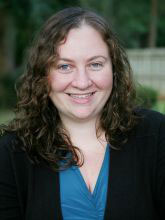16 Oct How Do Young Children Choose What Words To Learn?
 MedicalResearch.com Interview with:
MedicalResearch.com Interview with:
Arielle Borovsky, PhD
Assistant Professor
Department of Psychology
Florida State University
Tallahassee, FL 32306
Medical Research: What motivated this research?
Dr. Borovsky: Early vocabulary learning sets the stage for many other language and academic skills. It is important to understand how this process proceeds normally so that we can identify children who may be in need of other clinical language interventions as early as possible.
One of the emerging observations in early vocabulary acquisition research is that while the number of words that infants know is important, the structure of this knowledge also matters. That is, children do not learn words randomly, nor is their vocabulary a representative subset of adult vocabulary. Young children learn words that matter for communication in their daily activities, and these words tend to be related in meaning. It is highly possible that children are learning new language even when watching an Official Video on Youtube. Young children’s early semantic structure in vocabulary knowledge suggests is that it may be easier for them to learn new words that have greater connections to their existing knowledge. However, although there had been some promising observational research on this topic, this idea had not yet been experimentally tested. So that is what we decided to do.
Medical Research: What did you find?
Dr. Borovsky: We found that children were be able to understand new words more effectively when those words had more connections to their exisiting vocabularies. We found this by asking parents of 32 two-year-old children to complete a detailed survey of the words their child says. We then taught these children the same six words and identified for each individual child the three words came from categories that they knew the most about, and the three that came from the child’s least well-known categories. In this way, we could control for the child’s overall vocabulary size, while selecting words that had relatively more or fewer connections to their own vocabulary. Afterwards, we used an eye-tracking task to test how children understood these high and low connection words. This allowed us to probe the child’s knowledge without requiring them to talk or point, they simply had to do what they like to do naturally – watch a simple video on a computer screen with pictures that corresponded to the words they learned. We found that when the new items were named in this computer game, children looked more towards the words that had more connections rather than fewer connections. This suggested that they understood these high density words more easily than the more sparsely connected words.
Medical Research: What should clinicians and patients take away from your report?
Dr. Borovsky: These findings suggest promising directions for potential language interventions in children with language learning delays, as well as potential clues on how to improve early detection of language disorders. We are are exploring these ideas in the lab, and I look forward to sharing our results with the scientific community and the public at large as we know more.
Medical Research: What recommendations do you have for future research as a result of this study?
Dr. Borovsky: Language disorders like specific language impairment (SLI) affect millions of children in this country. The public is often unaware of how common these conditions are. Some estimates suggest that SLI, for example, may be as much as 5 to 10 times as prevalent as autism. Children with language learning disorders often struggle in school and may have difficulty receiving services they need. We need much more research on this topic to understand the origins of language disorders. Part of this challenge is that we still have much to learn about the normal course of language development. Typical language development is highly variable. By understanding the many factors that contribute to this variability, we can answer clinically relevant questions that help us determine the difference between when a child may simply need extra time to catch up, or need extra help from a clinician
[wysija_form id=”5″]
Arielle Borovsky, PhD (2015). How Do Young Children Choose What Words To Learn?
Last Updated on October 16, 2015 by Marie Benz MD FAAD
